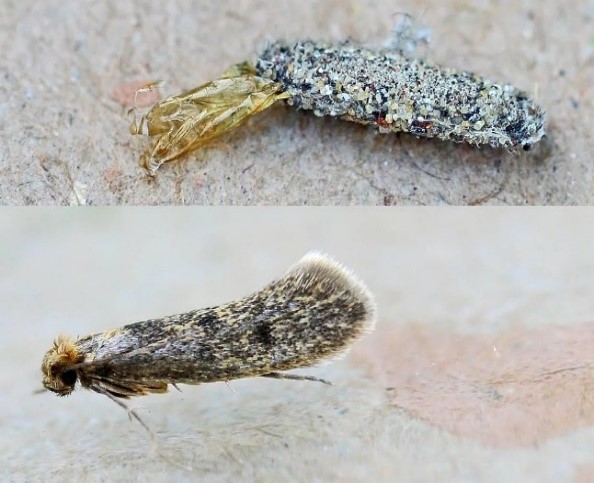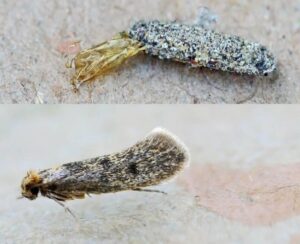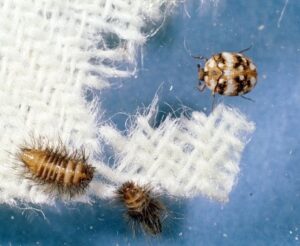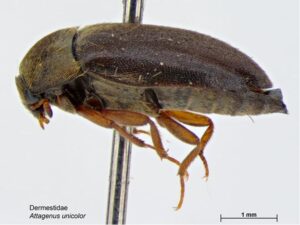Casemaking Clothes Moth
General Description
- This moth is browner in color than the webbing clothes moth

and has three dark spots on the wings, which help to identify it. - Adults vary in size as compared to the webbing clothes moth,
depending on the larval diet. - No tuft of reddish hairs arising from the top of the head of adult of
this moth are apparent, compared to the hairs of the webbing clothes moth.
Life Cycle and Common Characteristics
- The larva spins a small silken cell, bag or case around itself and carries it about while it feeds. It moves about by extending its head and legs from the front end of the case.
- Larvae wander about on food material and slightly feeding on these materials. It is rarely do extensive damage at any one spot or in a small area.
- When ready to pupate, the larva draws itself completely within its case, seals both ends of the case with silk, and pupates in its cocoon.
Damage and Economic & Health Implications
- This moth is a pest of feathers, but it can feed on almost any material listed as food for webbing clothes moths.




